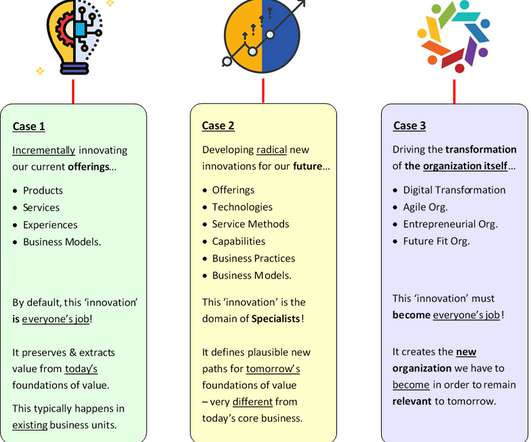8 Types of Innovation in Business: A Comprehensive Guide
Qmarkets
MARCH 27, 2024
Innovation isn’t just about the next big idea; it’s a multifaceted strategy that businesses employ to navigate through the twists and turns of today’s dynamic markets. Whether it’s tweaking a product to perfection or revolutionizing an industry standard, innovation comes in many flavors.






























Let's personalize your content